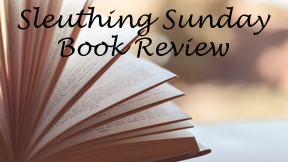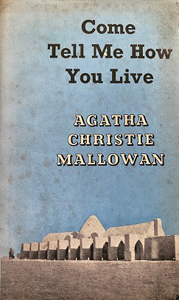Hercule Poirot often travels, even though it seems he would be annoyed by a lot of things about the process of traveling, not to mention the destination itself. Yet he keeps traveling, so he must like it. That’s not necessarily inconsistent characterization by Agatha Christie, though. Indeed, this aspect of Poirot’s personality might come from Christie herself!
Digging into the … present
“Come, Tell Me How You Live” (1946) is Christie’s travelog of a year in the 1930s of venturing through and living in Syria and Iraq as part of husband Max Mallowan’s job as an archeologist. About 80 percent of the book is complaints (all of them valid) about the conditions and the people she encounters. Yet her conclusion is that she loved the overall experience – and I believe her.
As fans know, Christie ventured from Poirot’s (and other main characters’) home base in England to the Middle East more so than other regions of the globe. For Poirot, “Murder in Mesopotamia” and “Death on the Nile” are the most famous. One-off spy adventurers go there in “They Came to Baghdad.”

“Come, Tell Me How You Live” (1946)
Author: Agatha Christie Mallowan
Genre: Travelog amid archeology expeditions
A woman gets stuck at an outpost between flooded wadis (roads) in the excellent Mary Westmacott character study “Absent in the Spring.” Although it’s not widely loved, I have a soft spot for her one historical mystery, set in ancient Egypt, “Death Comes as the End.”
You’d think “Come, Tell Me How You Live” would reveal real-world equivalents for characters in those books, but surprisingly, not really. This nonfiction account does feature vibrant people, but for some reason Christie generally didn’t use them in her fiction.
Colorful (real) characters
No matter; they are entertaining to read about here, mostly for the type of ridiculous but humanizing traits that Christie emphasized in Englanders in her fiction. The lead servant, despite straining with mental effort, can’t figure out the correct way to put sheets on a bed. The supplier for the expedition is so focused on making economical purchases that he buys useless rotten fruit. The sheikh from whom they are renting a house speaks openly of friendship and hospitality, but (not so) subtly about desiring a gold watch as a thank-you.
Although Christie’s naturalistic writing does emphasize the dark comedy, there is also plenty of genuine hardship for her as a civilized European – bouncing along rutted roads and getting splitting headaches. Meals include every edible part of a sheep.

But as the title suggests, she is truly interested in how these other cultures (God-fearing Arabs, but also colorful Kurds and violent Turks and depressive Armenians) live. She finds them baffling but also admirable.
Most striking to me is that death doesn’t hold much importance to these cultures, partly because their Muslim religion teaches of afterlife rewards. It’s shocking that fellow laborers laugh after four dig workers are killed in an earth collapse. But it’s also an undeniably mentally freeing way to think: Death will come when it comes; why worry about it all day?
On a less philosophical note, we see how Middle Easterners live in the moment. In the wake of payday, Max and his crew struggle to retain workers. Since they have money, they’ve all gone home to enjoy a period of not working. Once they run out of money, they’ll return to the dig site.
Piecing together the Christie puzzle
“Come, Tell Me How You Live” is an important piece of Christie scholarship for those willing to read between the lines. We get a sense of Christie’s shyness around certain types, namely the even more quiet Mac, who doesn’t respond to her early attempts at conversation. But once she figures him out, he’s a good friend.
We get a sense of her comfortable marriage to Max (her second husband, after Archie Christie), and how it’s not a big deal that her enthusiasm for archeology isn’t as extreme as his. On the flip side, she is able to type out some of her novels – when she gets time by herself – and Max is fine leaving her to that. Christie doesn’t openly say what novels she is working on, but I’m sure biographers have put the pieces together.
Speaking of putting pieces together, readers interested in archeology won’t get much out of this book – something Christie acknowledges off the bat. (Ironically, they’d be better off with the fiction piece “Death Comes as the End.”)
“Come, Tell Me How You Live” is a portrait of living in the now – the 1930s at the time – when the comforts of modern civilization were present in England. But you could find primitive (by our Western measure) cultures after several days’ travel.
I would not want to follow Christie’s footsteps – or her party’s cars’ rutted paths – but I was happy to hear of her experiences. She convinced me of the contradiction’s truth: The series of horrible small experiences added up to a wonderful overall experience.
Sleuthing Sunday reviews an Agatha Christie book or adaptation. Click here to visit our Agatha Christie Zone.

